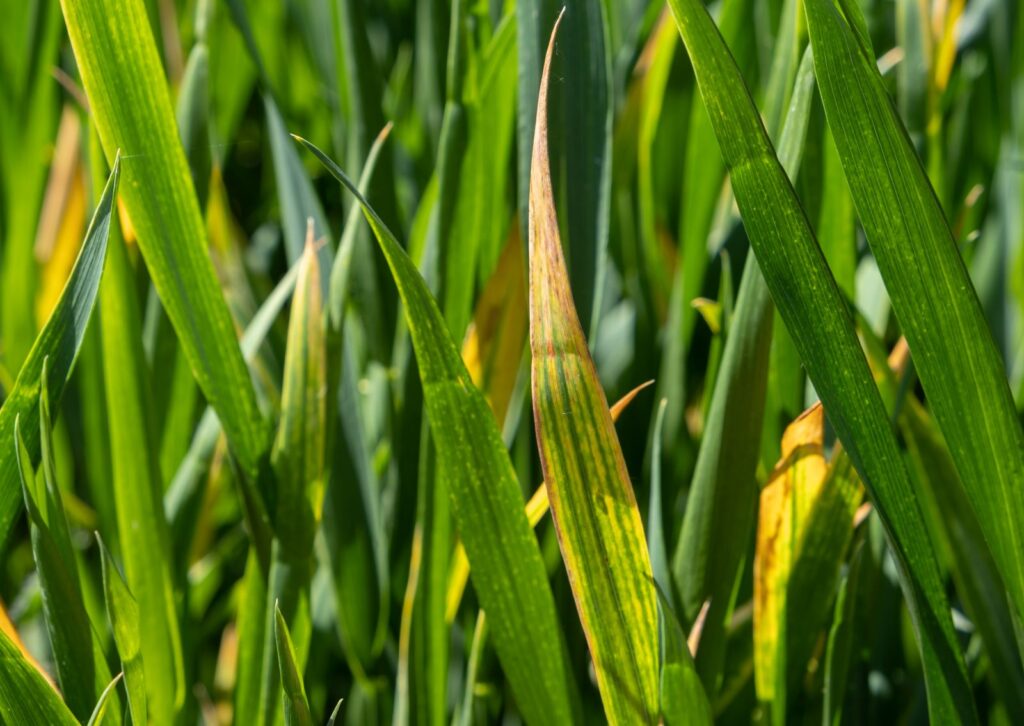Aphid control critical for managing BYDV risk this autumn
5th September 2023
With higher than average BYDV risk predicted this autumn, managing aphids that can infect newly emerging cereal crops will be of critical importance to arable growers, warns Neil Watson from production specialists Hutchinsons.
BYDV (barley yellow dwarf virus) infection can arise from two potential sources – directly from wingless aphids walking from infected plants in the same field or adjacent areas to the current crop, or indirectly where winged aphids migrate into newly emerged crops from further afield.
The earlier the infection occurs, the more damaging the virus can be at impacting yield to the newly emerged crop.
“Aphid vectors, especially Bird Cherry Oat aphids, are being caught in suction traps now, so any green stubbles will be attractive to the aphids – increasing the risk of transfer,” explained Hutchinsons southern technical manager, Neil Watson.
“There are several reasons for this elevated risk from the green bridge this autumn,” he says. “There is a potential reservoir of late BYDV infections in winter rather than spring cereals this season, which is the exact opposite of this time last year.”
The green bridge refers to the potential reservoir of aphids that have survived either on volunteer cereals or adjacent host crops which can infect the newly emerging cereal crop.
“Bushel weights are not as high as normal, leading to a greater potential of seed going out the back of the combine, ultimately leading to more volunteers, and the moist soil conditions are ensuring a rapid emergence of those volunteers,” Mr Watson continued.
As more growers turn to low-disturbance cultivation practices such as direct drilling, the risk of direct transfer also increases, while cover crops and environmental headlands can potentially harbour aphids, he added. The weather also has a role to play, with warm conditions working in favour of aphid numbers that are currently higher than normal.
As a result, managing the green bride is of vital importance if growers are to avoid large-scale losses from this yield-robbing disease.
“It’s key there is sufficient time between killing the volunteers through desiccation or cultivations and drilling the next crop,” Mr Watson pointed out. “As the volunteers start to die back, and they turn yellow, they could present a greater risk of attracting aphids than would normally be the case.
“If large numbers of aphids are present on volunteers or weeds which are cultivated during seedbed preparation, they can feed on new crop roots and transmit virus directly without appearing above ground level to provide a control opportunity,” he warned.
Using sticky traps to monitor aphid numbers in newly emerging crops is one way to get ahead of the curve. Mr Watson advises placing the traps downwind of the potential source of the flight into the crop, in a sheltered area that is five metres in from the headland at ground level.
He also noted that whilst environmental schemes and grass margins are supposed to increase the diversity of natural predators around the field margins, there is the possibility that through a lack of species diversity, they could harbour more aphids which cannot be treated until the end of the scheme.
“The increasing use of cover crops that inevitably include an element of cereals within the mixture will act as a potential reservoir. Woodland and waste ground could equally be a source of infection.”

